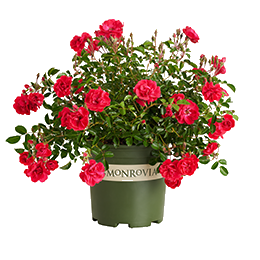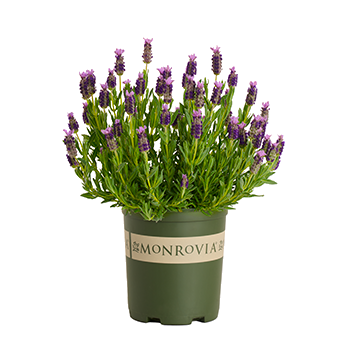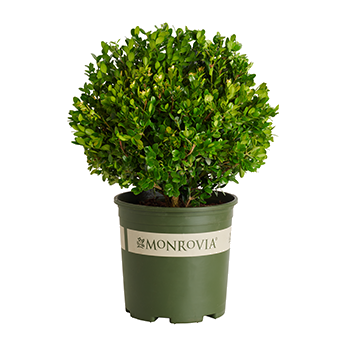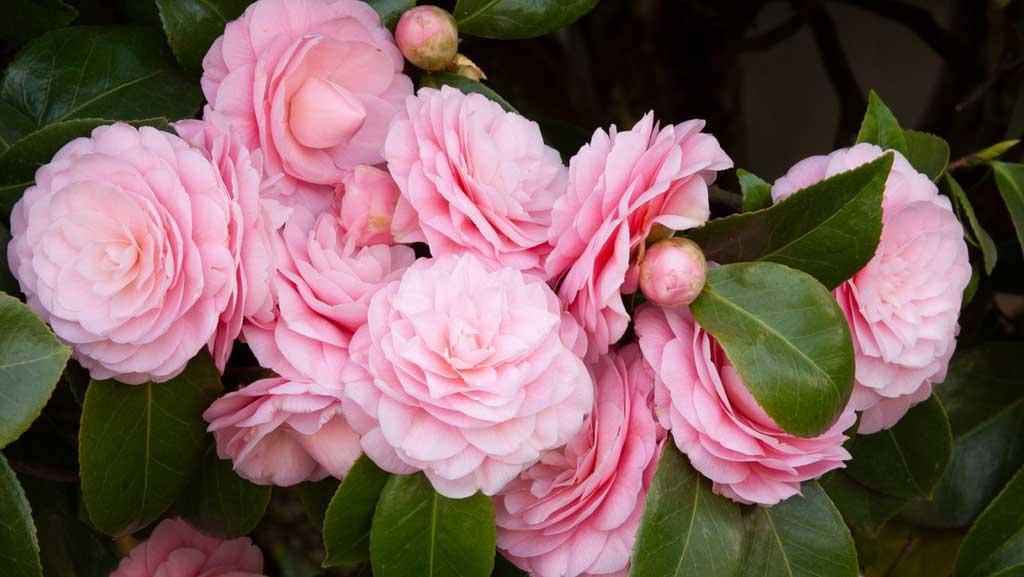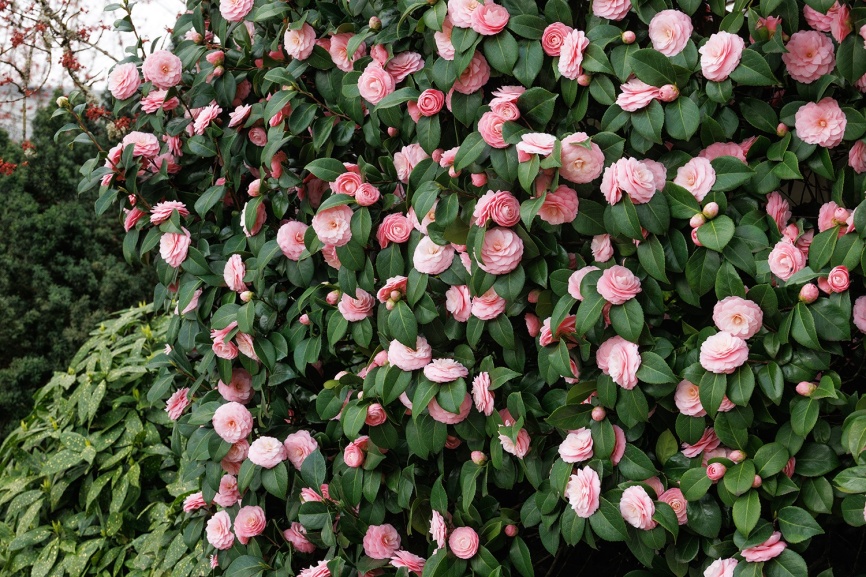You're growing in this Zip Code:
Change LocationDiscover Plants for Your Area
White Doves Camellia
Camellia sasanqua 'White Doves' ('Mine-No-Yuki')
Retailers Near You
Be Inspired: How to Use this Plant
| Description | Sparkling white, semi-double blooms cover glossy dark green foliage during the cool season. Upright, somewhat willowy branches form a handsome rounded shrub with age. Excellent for use as an accent, evergreen hedge, or espalier. A mid-season bloomer. |
|---|---|
| Bloom Time | Fall through winter |
| Deciduous/Evergreen | Evergreen |
| Special Features | Waterwise, Non-toxic to Cats and Dogs, Attracts Pollinators, Compact Form |
| Growth Rate | Moderate |
| Growth Habit | Spreading |
| Flower Attributes | Flowers for Cutting, Showy Flowers |
| Landscape Use | Border, Container, Espalier |
| Design Ideas | This semi-double white Camellia makes a wonderful backdrop to a moonlight garden in backyard beds close to your outdoor living space. An excellent choice for a colorful low hedge, espalier, or even as a ground cover due to its supple branching habit. A great addition to an Asian inspired garden or in mass at the front fringe of a woodland setting. Perfect for hanging baskets or pots. |
| Flower Color | White |
| Foliage Color | Dark Green |
| Care Instructions | Provide organically rich, well-drained, acidic soil. Keep roots cool with a thick layer of mulch. Water deeply and regularly during the first growing season to establish an extensive root system; reduce frequency, once established. Feed with an acid fertilizer after flowering. |
| Lore | Sometimes referred to as Christmas Camellias, the sasanqua varieties of Camellia are native to the evergreen, coastal forests of southern Japan. It was introduced by Dutch traders into Europe in 1869. The Japanese use the leaves of sasanqua to make tea, and the seeds are pressed into tea seed oil for use as a lubricant and in cooking and cosmetics. |
| Description | Sparkling white, semi-double blooms cover glossy dark green foliage during the cool season. Upright, somewhat willowy branches form a handsome rounded shrub with age. Excellent for use as an accent, evergreen hedge, or espalier. A mid-season bloomer. |
|---|---|
| Bloom Time | Fall through winter |
| Deciduous/Evergreen | Evergreen |
| Special Features | Waterwise, Non-toxic to Cats and Dogs, Attracts Pollinators, Compact Form |
| Growth Rate | Moderate |
| Growth Habit | Spreading |
| Flower Attributes | Flowers for Cutting, Showy Flowers |
| Landscape Use | Border, Container, Espalier |
|---|---|
| Design Ideas | This semi-double white Camellia makes a wonderful backdrop to a moonlight garden in backyard beds close to your outdoor living space. An excellent choice for a colorful low hedge, espalier, or even as a ground cover due to its supple branching habit. A great addition to an Asian inspired garden or in mass at the front fringe of a woodland setting. Perfect for hanging baskets or pots. |
| Flower Color | White |
| Foliage Color | Dark Green |
| Care Instructions | Provide organically rich, well-drained, acidic soil. Keep roots cool with a thick layer of mulch. Water deeply and regularly during the first growing season to establish an extensive root system; reduce frequency, once established. Feed with an acid fertilizer after flowering. |
|---|
| Lore | Sometimes referred to as Christmas Camellias, the sasanqua varieties of Camellia are native to the evergreen, coastal forests of southern Japan. It was introduced by Dutch traders into Europe in 1869. The Japanese use the leaves of sasanqua to make tea, and the seeds are pressed into tea seed oil for use as a lubricant and in cooking and cosmetics. |
|---|
Retailers Near You
About Us
We have been pioneers and craftsmen in the art of growing plants for nearly
100 years. Since our founding in Southern California by Harry E. Rosedale, Sr.
in 1926, we have been absolutely dedicated and obsessed with quality.
We have been pioneers and craftsmen in the art of growing plants for nearly 100 years. Since our founding in Southern California by Harry E. Rosedale, Sr. in 1926, we have been absolutely dedicated and obsessed with quality.
